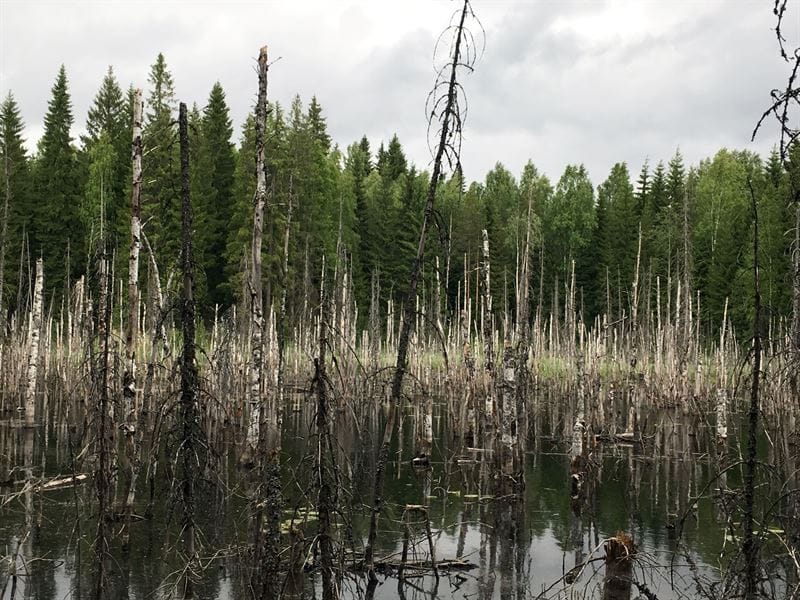Beavers are ecosystem engineers that cut down trees to build dams, eventually causing floods. Beaver-induced floods make forest landscapes and habitats increasingly diverse, but very little is known about the long-term effects of beavers on European landscapes. Researchers at the University of Eastern Finland and the University of Helsinki examined the history and occurrence of beaver-induced floods and patch dynamics in southern Finland. They used a unique dataset of field observations from 1970 to 2018.
Floods caused by beavers over the course of history form a network of different habitats that remain interconnected even for long periods of time.
“Beavers can help to restore wetland ecosystems and entire boreal forests, and they also help in conserving the biodiversity of these environments,” Researcher Sonja Kivinen from the University of Eastern Finland says.
The European beaver was hunted to extinction in the 19th century Finland. Nowadays, the study area is home to the American beaver, which was introduced there in the 1950s. The American beaver builds similar dams as the European one.
“The spread of the beaver in our study area has created a diverse and constantly changing mosaic of beaver ponds and beaver meadows of different ages,” Kivinen says.
In 49 years, number of beaver-induced flood sites grew 11-fold
The researchers observed that the number of beaver-induced flood sites grew by more than 11-fold over the study period. In addition to creating new flood sites, beavers also often use old sites to cause new floods. The duration of an individual flood and the frequency of floods can vary greatly between different flood sites, resulting in an abundance of habitat patches with different environmental conditions.
“Thanks to beaver activity, there is a unique richness of wetlands in the forest landscape: flowages dominated by bushes, beaver meadows, and deadwood that can be used by various other species,” University Lecturer Petri Nummi from the University of Helsinki says.
Indeed, beaver-induced disturbances are more predictable in diversifying the forest landscape than for example forest fires or storms.The study was carried out within the IBC-Carbon project funded by the Strategic Research Council at the Academy of Finland.

